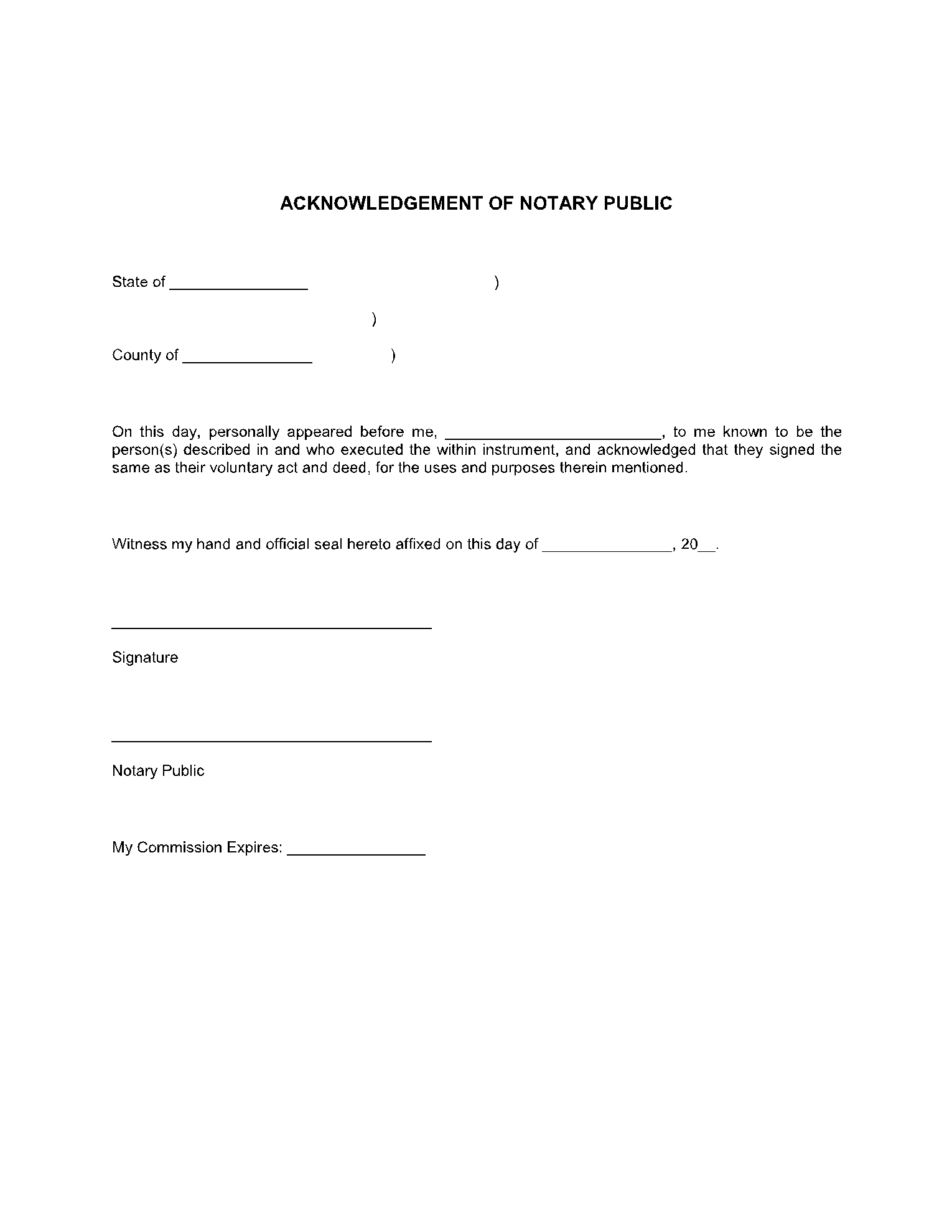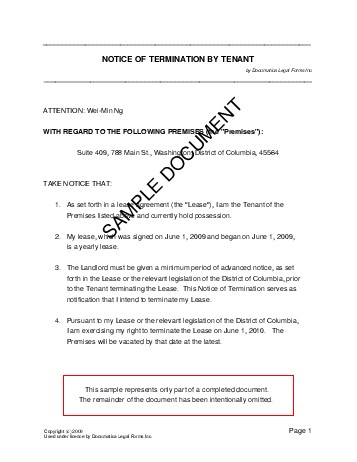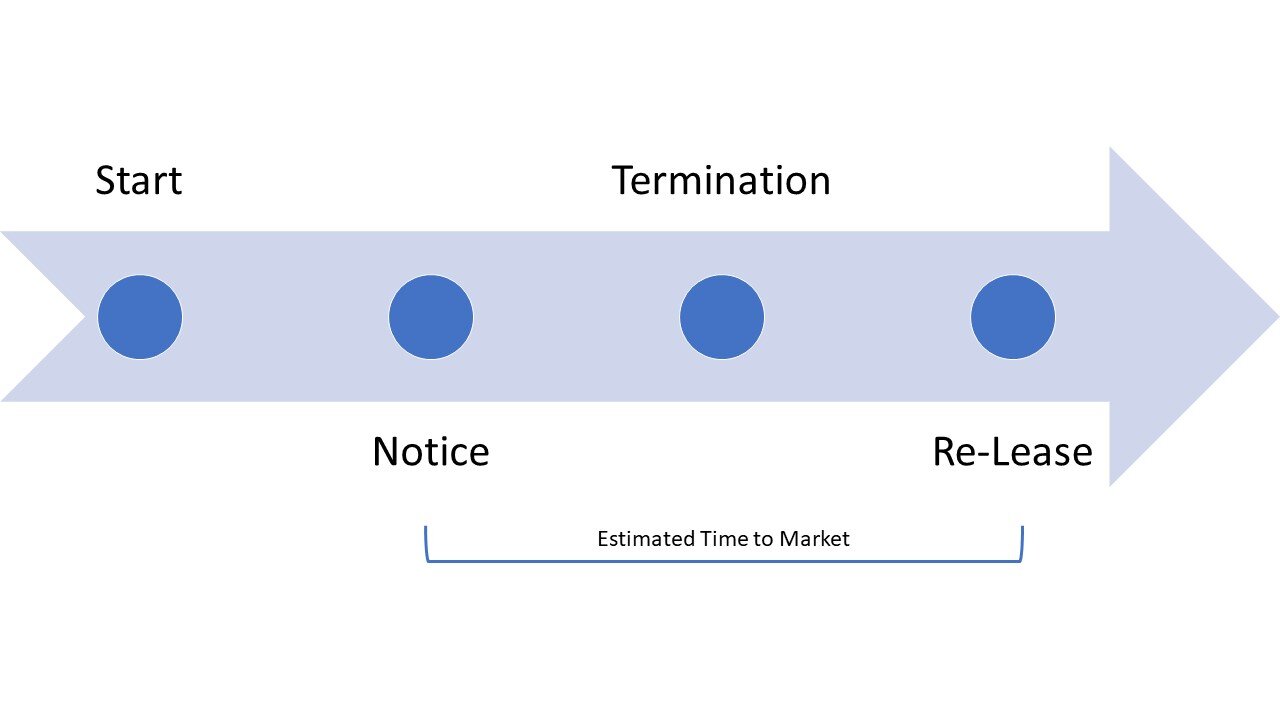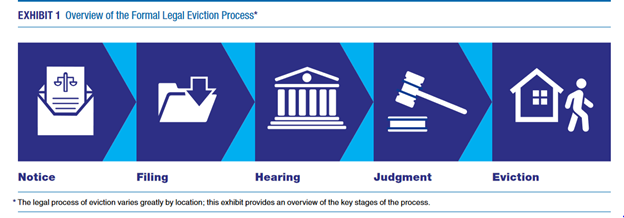Tenant responsibilities
Effective Lease Termination: Giving Notice and Ensuring Compliance

Effective Lease Termination: Giving Notice and Ensuring Compliance
Navigating the process of lease termination requires careful attention to detail and adherence to legal and contractual obligations. Whether you’re a tenant ending your lease or a landlord receiving notice, understanding the steps involved is crucial for a smooth transition.
Understanding Lease Termination Notice
Lease termination typically begins with providing proper notice. The terms for giving notice are usually outlined in the lease agreement, and compliance with these terms is essential. For tenants, this often involves giving a specific number of days’ notice to the landlord before vacating the property.
Reviewing Lease Agreement Terms
Before initiating the lease termination process, both landlords and tenants should thoroughly review the terms specified in the lease agreement. This includes the required notice period, any penalties or fees associated with early termination, and the preferred method of communication for delivering the notice.
Giving Adequate Notice as a Tenant
Tenants should be mindful of the notice period required by their lease agreement. This commonly ranges from 30 to 60 days. Providing notice well in advance allows landlords sufficient time to find new tenants or make necessary arrangements. Failure to give proper notice may result in financial penalties.
Landlord’s Responsibilities in Lease Termination
Landlords, too, have responsibilities when it comes to lease termination. They should clearly communicate the terms for ending the lease in the rental agreement and be prepared to guide tenants through the process. Understanding local rental laws and ensuring compliance with them is vital for landlords.
Documenting Lease Termination Notice
To avoid misunderstandings or disputes later on, it’s crucial to document the lease termination notice appropriately. Written communication, whether through a formal letter or email, provides a record of the notice and its details. This documentation can be beneficial for both parties if questions arise in the future.
Addressing Early Termination Fees
In some cases, tenants may need to terminate their lease before the agreed-upon term, leading to early termination fees. These fees should also be clearly outlined in the lease agreement. Tenants should be aware of these financial implications and factor them into their decision-making process.
Communication Is Key
Effective communication is a cornerstone of successful lease termination. Tenants should communicate their intention to terminate the lease clearly, providing specific details about the move-out date and any relevant circumstances. Landlords, in turn, should respond promptly and address any questions or concerns raised by the tenant.
Legal Considerations in Lease Termination
Both tenants and landlords must be aware of the legal considerations surrounding lease termination. Rental laws vary by jurisdiction, and understanding the specific regulations applicable to the property is essential. Seeking legal advice can provide clarity on rights, responsibilities, and potential legal consequences.
Utilizing Online Resources for Guidance
For tenants and landlords seeking additional guidance on lease termination, online resources can be valuable tools. Websites like Walenshipnigltd.com offer insights into the legal aspects of lease termination, providing a comprehensive understanding of the process. Visit Walenshipnigltd.com for helpful resources.
Planning for a Smooth Transition
A
Navigating Lease Termination Penalties: What You Need to Know
Understanding Lease Termination Penalties: A Comprehensive Guide
Lease termination penalties can be a complex aspect of rental agreements, influencing both landlords and tenants. It’s crucial for individuals involved in leasing arrangements to have a comprehensive understanding of these penalties to navigate the termination process smoothly.
Importance of Clear Lease Terms
Clear and well-defined lease terms are the foundation for a transparent and fair leasing relationship. Both landlords and tenants benefit from explicit clauses outlining lease termination penalties. This clarity ensures that both parties are aware of their responsibilities and the potential consequences of terminating the lease prematurely.
Common Lease Termination Penalties
Lease termination penalties can vary, but common elements include financial repercussions for ending the lease before the agreed-upon term. These penalties may encompass a specified amount of rent, fees for early termination, or other agreed-upon charges. Understanding the specifics of these penalties is crucial for tenants considering ending their lease early.
Legal Framework and Compliance
Lease termination penalties must comply with local rental laws and regulations. It’s essential for both landlords and tenants to be aware of the legal framework governing lease agreements in their jurisdiction. Non-compliance with legal requirements can lead to disputes and potential legal consequences.
Communication and Negotiation
Open communication between landlords and tenants is key when considering lease termination. In some cases, negotiations may be possible to mitigate or adjust termination penalties. Landlords may be open to compromises, such as a phased exit or allowing tenants to find a replacement. Clear communication and negotiation can prevent conflicts and foster a more amicable resolution.
Avoiding Lease Termination Penalties: Planning Ahead
To minimize the impact of lease termination penalties, both parties can take proactive measures. For tenants, this may involve reviewing lease terms before signing and discussing potential scenarios with the landlord. Landlords, on the other hand, can consider flexible lease terms or additional clauses that address unforeseen circumstances.
Professional Guidance and Mediation
In situations where disputes arise, seeking professional guidance or mediation can be beneficial. Legal professionals specializing in real estate can provide insights into the applicable laws and help navigate disagreements. Mediation services may offer a neutral platform for landlords and tenants to find mutually agreeable solutions.
Lease Termination Penalties with Walenshipnig Ltd
For comprehensive insights into lease termination penalties and expert guidance throughout your leasing journey, consider partnering with Walenshipnig Ltd. Our dedicated team understands the nuances of lease agreements and can assist both landlords and tenants in navigating potential challenges.
Lease termination penalties can be a complex subject, but with the right support, you can ensure a fair and equitable resolution. Walenshipnig Ltd’s expertise in property management provides valuable resources for individuals seeking clarity on lease termination penalties.
Conclusion: Navigating Lease Termination with Confidence
In conclusion, a thorough understanding of lease termination penalties is essential for both landlords and tenants. Clear communication, compliance with legal requirements, and proactive planning can contribute to a smoother termination process. By leveraging professional guidance, such as that provided by Walenshipnig Ltd, individuals can navigate lease terminations with
Smooth Transition: Lease Transfer Requirements Unveiled

Navigating the Process: Unveiling Lease Transfer Requirements
Lease transfer requirements can seem intricate, but understanding the process is crucial for both landlords and tenants. In this guide, we’ll explore the key steps and requirements involved in lease transfers, ensuring a smooth transition for all parties.
Initiating the Transfer: Tenant Responsibilities
The process of lease transfer typically begins with the tenant expressing their intention to transfer the lease to another party. Tenants should check their lease agreement for specific clauses related to transfers and understand any restrictions or conditions. Initiating the transfer often requires formal communication with the landlord, outlining the reasons for the transfer and providing details about the prospective new tenant.
Landlord Approval: Crucial Step in the Process
One of the primary lease transfer requirements is obtaining landlord approval. Landlords typically have the right to approve or deny a lease transfer based on various factors. These may include the financial stability of the new tenant, their rental history, and their ability to meet the terms of the existing lease. It’s essential for tenants to seek landlord approval before proceeding with the transfer.
Documentation and Paperwork: Organizing Essentials
Lease transfer involves significant documentation and paperwork. Tenants and landlords need to ensure that all necessary documents are organized and completed accurately. This may include a formal request for lease transfer, a lease transfer agreement, and any additional forms required by local regulations. Thorough and organized documentation streamlines the process and reduces the likelihood of misunderstandings.
Financial Responsibilities: Clarifying Obligations
Understanding the financial obligations associated with lease transfer is vital. In many cases, tenants remain responsible for the lease until the transfer is officially approved and completed. Clear communication about rent payments, security deposits, and any fees related to the transfer ensures that all parties are aware of their financial responsibilities throughout the process.
Tenant Screening: Evaluating the New Tenant
As part of the lease transfer requirements, landlords often conduct a screening process for the prospective new tenant. This may involve a credit check, rental history verification, and possibly employment verification. The goal is to ensure that the new tenant is financially stable and meets the criteria set forth in the original lease agreement.
Updating Lease Agreement: Reflecting Changes
Once landlord approval is obtained and all necessary documentation is in order, the lease agreement must be updated to reflect the changes. This may involve drafting a new lease agreement or an amendment that clearly outlines the transfer of the lease from the original tenant to the new tenant. Updating the lease agreement ensures legal clarity and protects the rights of all parties involved.
Property Inspection: Ensuring Compliance
Some lease transfer requirements may include a property inspection. This step is often conducted to ensure that the property is in good condition before the transfer takes place. Both the outgoing tenant and the incoming tenant may be involved in the inspection process to document the state of the property and address any necessary repairs or maintenance.
Notifying Utility Companies: Transferring Services
Tenants involved in
Navigating Lease Termination Conditions: A Comprehensive Guide

Understanding Lease Termination Conditions: A Comprehensive Guide
Lease termination conditions are a crucial aspect of the landlord-tenant relationship, outlining the circumstances under which a lease can be legally concluded. This guide aims to provide a comprehensive overview of lease termination conditions, shedding light on the key considerations for both landlords and tenants.
1. Importance of Clear Terms in the Lease Agreement
The foundation of smooth lease termination lies in the clarity of the lease agreement. Both landlords and tenants must understand the terms and conditions specified in the document. This includes provisions related to notice periods, reasons for termination, and any associated penalties or obligations.
2. Legal Requirements and Notice Periods
Lease termination conditions are often governed by legal requirements, and these vary based on jurisdiction. It’s imperative to be aware of the notice periods mandated by local laws. Typically, landlords and tenants must provide advance notice before terminating a lease. Understanding and adhering to these legal requirements is crucial to avoid disputes.
3. Tenant Responsibilities and Property Condition
Tenants play a significant role in the lease termination process. The lease agreement may specify conditions related to the property’s condition upon departure. Tenants are usually responsible for returning the property in the same state as when they moved in, with allowances for reasonable wear and tear.
4. Landlord’s Obligations and Return of Security Deposit
Landlords, too, have responsibilities during the lease termination process. This includes conducting a thorough inspection of the property and returning the security deposit to the tenant, minus any legitimate deductions for damages or unpaid rent. Clearly outlining these obligations in the lease agreement is essential for a smooth transition.
5. Early Termination Clauses and Penalties
Lease agreements may include early termination clauses, allowing either party to end the lease before the agreed-upon term. However, such clauses often come with penalties or financial repercussions. Both landlords and tenants should be aware of these clauses and the associated costs, providing transparency and avoiding surprises.
6. Mutual Agreement for Lease Termination
In some cases, landlords and tenants may mutually agree to terminate the lease before the scheduled end date. This could be due to changes in circumstances for either party. Clearly documenting this mutual agreement and ensuring that both parties are on the same page is essential to prevent misunderstandings.
7. Eviction as a Last Resort
If a tenant violates the terms of the lease, eviction may be the last resort for landlords. However, specific conditions must be met for a legal eviction. It’s crucial for landlords to follow the legal process and adhere to local regulations to avoid legal complications.
8. Documentation and Communication
Clear communication and thorough documentation are paramount in navigating lease termination conditions. Both landlords and tenants should communicate any intentions to terminate the lease in writing and keep a record of all correspondences. This documentation can serve as crucial evidence in case of disputes.
9. Seeking Legal Advice When Needed
In complex situations or when facing challenges in the lease termination process, seeking legal
Navigating Lease Termination: Timelines and Guidelines

Navigating Lease Termination: Timelines and Guidelines
Leasing a property comes with its own set of rules and responsibilities, and understanding the lease termination process is crucial for both landlords and tenants. Let’s delve into the timelines and guidelines associated with lease termination.
Initiating the Process: Understanding Notice Periods
The journey of lease termination begins with providing proper notice. Most leases require tenants to give a specified period of notice before moving out. This notice period varies and is typically outlined in the lease agreement. It’s essential for both tenants and landlords to be aware of and adhere to these timelines to ensure a smooth transition.
Tenant Responsibilities: Fulfilling Lease Obligations
Before initiating the lease termination process, tenants should review their lease agreements to understand any specific obligations related to moving out. This may include responsibilities such as cleaning, repairing damages, or fulfilling the agreed-upon terms for the return of the security deposit. Meeting these requirements is essential for a hassle-free termination process.
Landlord’s Role: Inspections and Communication
Landlords play a crucial role in the lease termination process. They may conduct a pre-move-out inspection to assess the condition of the property and identify any potential issues. Clear communication between landlords and tenants is vital during this phase. Discussing expectations, addressing concerns, and providing necessary information can help streamline the termination process.
Security Deposits: Understanding Refund Timelines
One critical aspect of lease termination is the return of the security deposit. Lease agreements typically outline the conditions under which the deposit will be refunded and the timeline for its return. Landlords are generally required to return the deposit within a specific period after the tenant has vacated the property. Understanding these refund timelines is essential for both parties.
Early Termination: Exploring Exceptions
In some situations, tenants may need to terminate their leases before the agreed-upon period. This could be due to unforeseen circumstances such as job relocation or personal emergencies. Understanding the exceptions and potential penalties for early termination is crucial. Open communication with the landlord can often lead to more flexible solutions.
Legal Considerations: Complying with Local Laws
Lease termination timelines can be influenced by local and state laws. It’s essential for both landlords and tenants to be aware of these legal considerations. Some jurisdictions may have specific rules regarding notice periods, reasons for termination, and other aspects of the process. Compliance with these laws is crucial to avoid legal complications.
Documentation: Recording the Process
Throughout the lease termination process, documentation is key. Both landlords and tenants should keep records of all communication, including notices, inspections, and agreements. Having a well-documented process can protect both parties in case of any disputes or misunderstandings down the line.
Lease Termination Timelines at Walenshipnigltd.com
For more detailed insights into lease termination timelines and guidelines, visit Walenshipnigltd.com. Explore comprehensive resources to navigate the lease termination process effectively and ensure a seamless transition for both landlords and tenants.
Conclusion: A Smooth Transition for All
Navigating lease termination involves a combination of clear communication, understanding obligations, and
Navigating the Eviction Process: Rights and Responsibilities

Understanding the Eviction Process: Rights and Responsibilities
The eviction process is a legal procedure that landlords may initiate to regain possession of their property. For tenants, understanding their rights and responsibilities during this challenging situation is crucial. This article delves into the eviction process, offering insights into the steps involved, legal considerations, and the rights of both landlords and tenants.
Initiating the Eviction: A Last Resort for Landlords
Evictions typically arise when a tenant fails to meet their lease obligations, such as non-payment of rent or violating terms outlined in the lease agreement. Landlords often view eviction as a last resort after attempts to resolve issues through communication or alternative solutions have proven unsuccessful. It is a legal process that must adhere to specific guidelines and regulations.
Issuing the Eviction Notice: Formal Communication
The eviction process usually begins with the landlord serving an eviction notice to the tenant. This formal communication outlines the reasons for eviction and a specified period within which the tenant must remedy the situation or vacate the premises. The type of notice and the duration provided vary depending on local laws and the reason for eviction.
Tenant’s Response and Options: Understanding Legal Rights
Upon receiving an eviction notice, tenants have legal rights and options. They may choose to address the issues mentioned in the notice, such as paying overdue rent or rectifying lease violations, within the stipulated timeframe. Additionally, tenants may seek legal advice to understand their rights and explore any available defenses against eviction.
Legal Grounds for Eviction: Lease Violations and Non-payment
Evictions are typically grounded in specific lease violations or non-payment of rent. Common lease violations include unauthorized subletting, property damage, or engaging in illegal activities on the premises. Non-payment of rent is a prevalent reason for eviction, and tenants failing to meet their financial obligations may face legal consequences.
Filing an Eviction Lawsuit: Legal Procedures
If a tenant does not address the issues outlined in the eviction notice, the landlord may proceed to file an eviction lawsuit, also known as an unlawful detainer action. This legal procedure involves submitting a complaint to the court, specifying the reasons for eviction and seeking a court order to regain possession of the property.
Court Hearing and Judgment: The Legal Process Unfolds
After filing an eviction lawsuit, both parties are summoned to a court hearing. During the hearing, each party presents their case, and the judge makes a judgment based on the presented evidence and applicable laws. If the court rules in favor of the landlord, a judgment for possession is issued.
Execution of Eviction: Regaining Possession
Following a court judgment, the landlord may obtain a writ of possession, allowing law enforcement to physically remove the tenant from the property. The execution of the eviction involves coordinating with law enforcement to regain possession of the premises. This step is often considered a last resort and is carried out under the supervision of authorities.
Aftermath of Eviction: Tenant’s Responsibilities
Once evicted, tenants face several responsibilities, including removing personal
Navigating Lease Penalties: Understanding Consequences and Solutions
Navigating Lease Penalties: Understanding Consequences and Solutions
Lease penalties can be a source of stress and uncertainty for both landlords and tenants. It’s essential to comprehend the potential consequences, explore preventive measures, and understand solutions for addressing lease penalties to maintain a positive landlord-tenant relationship.
Understanding Lease Penalties
Lease penalties are charges imposed on tenants for violating the terms of their lease agreement. Common infractions include late rent payments, unauthorized subleasing, or damage beyond normal wear and tear. It’s crucial for both parties to have a clear understanding of these penalties outlined in the lease.
Consequences of Late Rent Payments
Late rent payments are a common cause of lease penalties. Tenants failing to pay rent on time may face late fees, impacting their financial stability. Landlords, reliant on timely payments, may also experience financial strain. Clear communication and setting expectations regarding rent due dates can prevent such issues.
Unauthorized Subleasing and Its Ramifications
Subleasing without the landlord’s approval is another violation that can lead to lease penalties. Landlords often want control over who occupies their property, and unauthorized subleasing can result in penalties for the tenant. Tenants should seek permission before subleasing to avoid such consequences.
Damage Beyond Normal Wear and Tear
Lease agreements typically outline the expected condition of the property upon the tenant’s departure. Any damage beyond normal wear and tear may incur penalties. Conducting a thorough move-in and move-out inspection, with documented evidence, helps in determining responsibility for damages and avoids disputes.
Preventive Measures for Tenants
Tenants can take proactive steps to avoid lease penalties. Setting reminders for rent due dates, seeking landlord approval for any changes to the lease agreement, and maintaining the property in good condition are essential preventive measures. Open communication with the landlord can also address issues before they escalate.
Landlord’s Role in Prevention
Landlords play a crucial role in preventing lease penalties. Clear communication of expectations, providing tenants with a copy of the lease agreement, and addressing concerns promptly can foster a positive tenant-landlord relationship. Proactive communication can prevent misunderstandings that lead to penalties.
Negotiating Solutions Amicably
In situations where lease penalties become imminent, amicable negotiation is key. Both parties should be open to discussing the circumstances and finding mutually agreeable solutions. This can involve setting up a payment plan for overdue rent or addressing repair issues in collaboration with the landlord.
Legal Implications and Resolution
Understanding the legal implications of lease penalties is vital for both landlords and tenants. Tenants facing penalties should be aware of their rights, and landlords should ensure that any penalties imposed align with local rental laws. Seeking legal advice can be beneficial for resolution and preventing legal complications.
Educational Resources for Lease Compliance
To prevent lease penalties, both landlords and tenants can benefit from educational resources. Websites like Walenshipnigltd.com provide insights into lease compliance, understanding rental laws, and tips for maintaining a positive tenant-landlord relationship. Visit Walenshipnigltd.com for valuable resources on navigating lease agreements.
Maintaining a Positive Tenant-Landlord Relationship
Ultimately, the goal is to maintain a
Housing Laws: Navigating Legalities for Tenants and Landlords

Decoding the Framework: A Comprehensive Guide to Housing Laws
Housing laws form the backbone of the landlord-tenant relationship, delineating rights, responsibilities, and legal obligations. For both tenants and landlords, a nuanced understanding of these laws is paramount to navigate the complex landscape of rental properties successfully.
Understanding Tenant Rights: The Core of Housing Laws
At the heart of housing laws lie the rights and protections afforded to tenants. These encompass a range of aspects, including the right to a habitable living space, protection against discrimination, and the right to privacy. Knowledge of these rights empowers tenants to assert themselves within the legal framework.
Landlord Obligations: Complying with Legal Standards
Conversely, landlords must adhere to specific obligations outlined in housing laws. From maintaining the property in a habitable condition to respecting tenants’ privacy, understanding and meeting these obligations is crucial. Failure to do so can lead to legal consequences and disputes that may disrupt the landlord-tenant relationship.
Lease Agreements: Legal Foundations of the Tenant-Landlord Relationship
The lease agreement is the legal document that formalizes the tenant-landlord relationship. Housing laws often dictate the permissible terms within these agreements, covering aspects such as rent increases, security deposits, and the duration of the lease. Both parties should thoroughly understand the terms before signing, ensuring a clear understanding of their respective rights and responsibilities.
Navigating Rent Control Regulations
In some jurisdictions, rent control regulations are implemented to protect tenants from exorbitant rent increases. Understanding the applicable rent control laws is essential for both tenants and landlords. Tenants can ensure fair pricing, while landlords need to comply with legal limits and procedures for adjusting rents.
Discrimination Protections: Ensuring Fair Housing Practices
Housing laws explicitly prohibit discrimination in various forms, including race, gender, disability, and more. Landlords must adhere to fair housing practices when selecting tenants, and tenants have the right to be free from discriminatory actions. Awareness of these protections is vital for fostering a just and inclusive housing environment.
Eviction Procedures: Balancing Rights and Legal Processes
When the need for eviction arises, both tenants and landlords must follow legally prescribed procedures. Housing laws outline the grounds for eviction, the notice period required, and the lawful process to reclaim possession of the property. Understanding and adhering to these procedures is crucial to avoid legal complications.
Tenant Responsibilities: Upholding Agreement Terms
Tenants, too, have responsibilities outlined in housing laws. These may include timely rent payments, maintaining the property in good condition, and adhering to the terms of the lease agreement. Understanding and fulfilling these responsibilities is key to a harmonious tenant-landlord relationship.
Security Deposits: Legal Handling and Returns
Housing laws often dictate the proper handling of security deposits. From the allowable purposes for withholding a deposit to the timeline for returning it after the lease ends, landlords must adhere to legal guidelines. Tenants should be aware of their rights concerning the security deposit to ensure a fair resolution at the end of the lease term.
Legal Recourse: Navigating Disputes and Violations
In the event of disputes or


